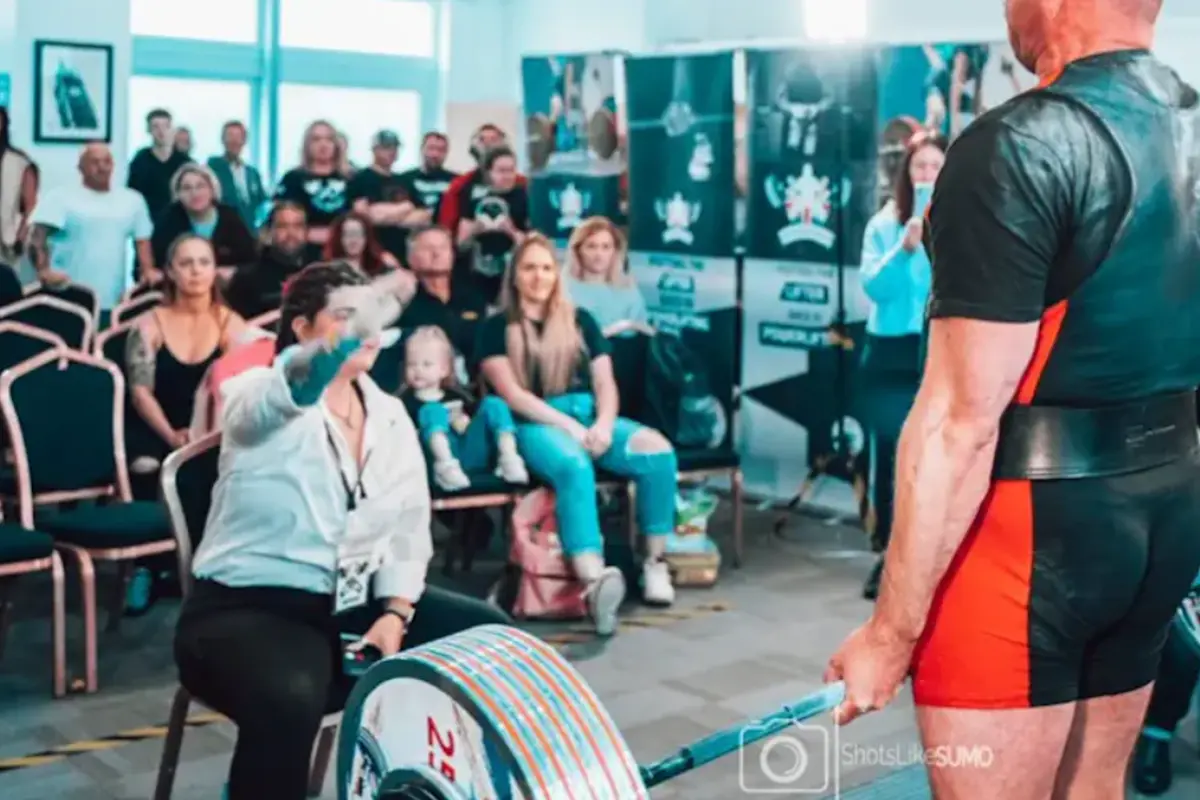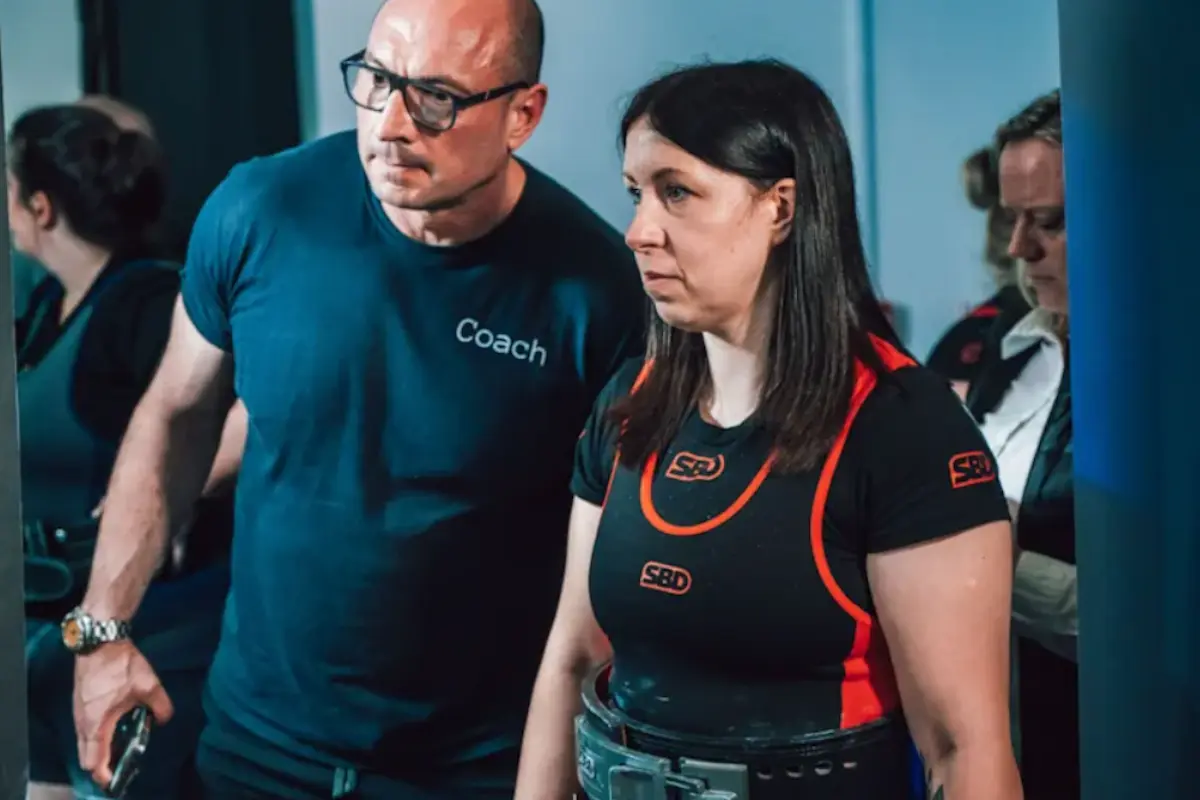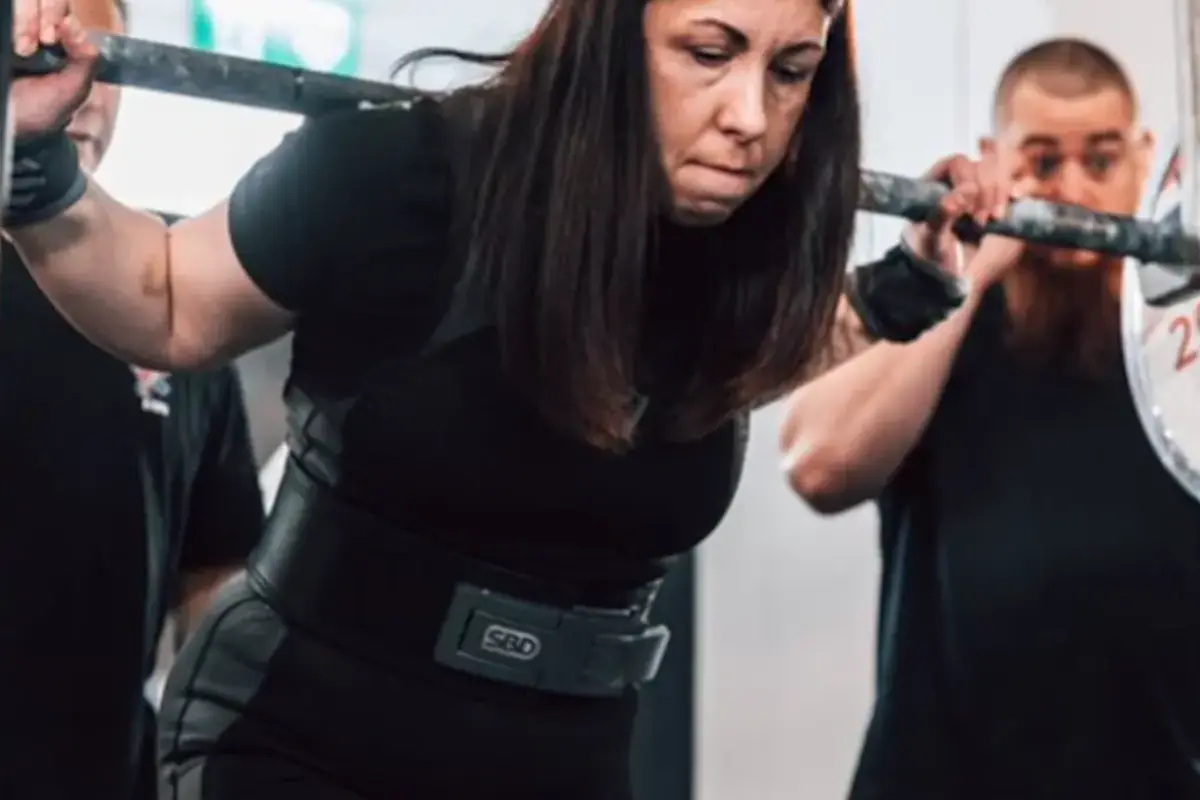10 Tips To Help You Prepare For Your First Powerlifting Meet

What's In This Article
- Key Highlights
- Introduction to Your First Powerlifting Meet
- 1. Following a Powerlifting Training Program
- 2. Setting Realistic Performance Goals
- 3. Familiarising Yourself with Powerlifting Competition Commands
- 4. Adhering to the Federation's Rules
- 5. The Importance of a Game Day Coach or Handler
- 6. Choosing the Right Lifting Attire and Equipment
- 7. Effective Preparation and Strategy for Lift Attempts
- 8. Nutrition and Hydration Strategies
- 9. Visit the Venue in Advance
- 10. Engage with the Powerlifting Community
- Conclusion
- Frequently asked questions
- Resources
Key Highlights
- Practice competition commands during training to avoid penalties.
- Pack backup gear in case equipment fails inspection.
- Stay in your natural weight class for your first meet.
- Visit the venue beforehand to reduce competition day anxiety.
- Avoid trying new foods on meet day to prevent digestive issues.
- Find an experienced coach or handler to guide attempt selection.
Introduction to Your First Powerlifting Meet
The first powerlifting meet is a significant milestone for any lifter transitioning from training to competition. This guide, written by experienced Sportive Tricks coaches, provides essential tips for beginners preparing for their debut competition.
From understanding the benefits of powerlifting to engaging with the community, it covers all aspects of meet preparation, including lifting attire, setting goals, and familiarizing yourself with competition commands.
Joe Corbin, a powerlifting competitor, coach and author at Cast Iron Strength, advises newcomers not to worry about others' performances. He notes, "Nobody at the meet was even arsed about the amount of weight anybody else was lifting, literally, all they cared about was that you stood/pressed/pulled that weight up and got 3 white lights." Corbin recommends entering a meet as soon as possible.
1. Following a Powerlifting Training Program
Powerlifting training is more than just physical prep; it's a diverse routine for body and mind.
- Consistent, focused training is key. It improves technique for squats, bench presses, and deadlifts while building mental strength for competitions.
- Engage in a good training program to improve strength and technique. Sessions help master powerlifting skills like squat depth and bench press form. Attention to detail prepares lifters to perform well on competition day.
- Powerlifting training helps build discipline and mental strength. Challenges like tough squats and bench press records in training mimic meet obstacles.
2. Setting Realistic Performance Goals
Realistic goals guide training and competition strategy. Achievable targets boost motivation and success.
- Real goals depend on knowing your squat, bench press, and deadlift abilities. Look at past workouts and records to set achievable expectations for your first meet. Understand your progress and aim for realistic milestones in powerlifting.
- For new lifters, focus on completing lifts with proper form and following competition rules for success. Master powerlifting basics and etiquette before pursuing heavy weights. Performance in meets depends on skills, not just strength.
- A powerlifting coach can be crucial for beginners. They adjust your training slowly for each lift. They guide you on competition day, from warm-ups to adjusting attempts based on feelings. Their expertise helps set achievable goals.
- Consider setting extra goals for fun at your first powerlifting meet. Interact with others, learn, and enjoy the event. These goals can be as rewarding as hitting specific numbers, enhancing your journey with valuable experiences beyond statistics.
When setting goals for powerlifting meets, it's important to allow flexibility. Factors, like meet prep, body weight changes, and daily energy levels, can impact performance. Stay adaptable to adjust your goals as necessary.

3. Familiarising Yourself with Powerlifting Competition Commands
First-time powerlifters often forget about competition commands. Judges give these during lifts to ensure rule compliance. Mastering them is crucial to avoid penalties and show technical proficiency in lifts.
- Each powerlifting lift has specific commands. For squats, wait for cues to start and rack weights. Bench press needs starting, pressing, and racking commands. Deadlifts have one command to lower the bar carefully.
- Practicing these instructions in training is as essential as physical prep. Include mock meets or simulation days. You'll mimic competition conditions and improve lift technique and mental readiness to handle commands well.
- Powerlifting coaches stress knowing commands and suggest adding similar drills to practice them. For example, training includes pausing during the bench press. Lifters need to hold the bar at the chest until told to press.
- To prepare for your first powerlifting meet, watch meets before competing. Seeing lifters follow commands helps you learn.
4. Adhering to the Federation's Rules
Success in powerlifting contests depends on strength, technique, and knowing the rules of the hosting federation.
- Each federation has its guidelines for attire, equipment, and lifts. Competitors must understand these rules before competition day to comply and succeed.
- The rules about clothes for the competition are essential. They mention what you can wear. This includes special kit, like knee sleeves or wraps. It also talks about shoes and belts. Some categories might let you wear extra gear to help with lifting, like a squat suit. But others only allow lifting without any extra help.
- Equipment rules cover more than just clothes. They also dictate chalk type and physio tape use. These rules keep things fair and uphold competition integrity. Breaking them can result in lift disqualification or getting kicked out of the meet.
- Lift techniques for squat, bench press, and deadlift must meet specific standards. Judges watch closely for compliance. Non-compliance can lead to disqualification, affecting the lifter's overall score in the competition.
- Before your first powerlifting meet, read the rulebook of the federation. Federations offer detailed guidelines on websites. Attend a rules meeting before the meet to ask questions and get insights from officials.
- Engage with the powerlifting community for advice and experiences on federation rules. Get help from partners or coaches who are familiar with the standards.

5. The Importance of a Game Day Coach or Handler
A helpful coach can make a big difference on the day of a powerlifting meet. The coach gives guidance and support and helps organize things so the lifter can focus on performing well during their first competition. This is especially useful for first-time competitors who might feel overwhelmed.
At Sportive Tricks, we are regulars on the UK competition circuit, guiding our lifters through the ups and downs that inevitably come with competing. As competitive lifters, we understand what is needed before, during and after the big day.
- A good coach plans the opening lifts and adjusts based on how the lifter is doing and what others are doing. They understand the lifter's abilities, the competition, and when to make changes. Coaches watch others lift to adapt strategies for success.
- Besides strategy, a coach provides emotional backing by keeping the lifter calm and motivated throughout the competition. This helps new lifters who might be nervous. A coach's presence can reduce anxiety and help lifters concentrate on their lifts positively.
- In managing things behind the scenes, a coach ensures everything goes smoothly. They handle warm-ups, prepare for each attempt, and manage equipment needs. Coaches keep track of schedules to ensure the lifter is ready when needed. This support allows lifters to focus on performing without distractions.
- Handlers are crucial in timing and preparing the lifter in the warm-up area. They supervise warm-up routines to match platform attempts. Handlers decide when to start warming up, pace it correctly, and stop at the right time for a well-prepared opening attempt.
- Picking the right coach or handler is vital. They should know about powerlifting techniques and be trusted by the lifter. Often, this person is a training buddy or involved in preparation before meets.
6. Choosing the Right Lifting Attire and Equipment
Choosing the right clothes and gear is crucial for a powerlifting competition. Specific attire helps you follow the rules and boosts performance.
- Due to different federation guidelines, understand what to look for in clothing and gear.
- Start with a singlet, essential for powerlifting, meeting specific federation requirements for material, fit, and color. It allows judges to assess your movements accurately during lifts, such as squat depth or bench press form. Comfort is key - it should be snug but allow a full range of motion.
- Footwear choice is vital, too. Based on your technique and comfort, decide between flat soles (like deadlift slippers) or shoes with a slight heel (common for squats). Good shoes enhance stability and power transfer during lifts, so experiment to find what suits you best.
- Supportive gear like knee sleeves, wraps, and belts are common. Each federation has rules about equipment thickness and material.
- Wrist wraps aid in bench press and squats, while lifting straps are helpful in training but not allowed in competitions for deadlifts.
- Test your gear before the meet to ensure comfort and function; using new equipment on the day can lead to issues.
- Always bring spare gear if possible - an extra singlet, shoes, or belt can save you if something fails or is deemed non-compliant during inspection. Being prepared reduces stress, letting you focus on performing your best.

7. Effective Preparation and Strategy for Lift Attempts
Approach lift attempts strategically to do well at a powerlifting meet, especially for your first attempt. Choosing weights goes beyond training sessions and training lifts. Consider competition, your condition, and psychological factors. Devise a solid game plan for success by focusing on lifts you're confident with under competition conditions.
Start with a Solid Opening Attempt
Your first lift is crucial for the competition. It should be a weight you can easily lift, around 90-92% of your maximum. This cautious start helps build confidence and sets the stage for your subsequent attempts, particularly your final attempt. Choosing a good starter weight lets you understand your strength on that day while allowing for much room in your warmup strategy. This insight can guide your plan for the rest of the lifts.
Plan Your Second Attempt
The second attempt in powerlifting should be a step closer to your maximum potential. This lift typically ranges from 95-97% of your 1RM, a weight you've previously handled during your training peak for a single rep. It acts as a bridge between the opener and the final push for a personal best, boosting confidence and laying the groundwork for achieving a personal record on the third attempt.
Strategise Your Third Attempt
Your last try is essential. Consider how your first two tries went. Decide if you want to set a new record or a safer weight for your total. Think about both your body and mind. If the second try was tough, go for a slight increase. If it felt easy, aim higher for a new best.
Adaptability is Key
Having a plan is crucial, but flexibility matters too. Competitions have many variables, like sleep, food, and stress levels. You need to be willing to adapt based on how you feel. Experienced competitors listen to their bodies and adjust strategies accordingly.
Utilise Your Coach or Handler
A coach can guide you on your attempts, giving advice on safety and aggression based on competition dynamics. Their experience assists in making strategic decisions that match your strengths and the competition atmosphere..
Practice Makes Perfect
Finally, add mock meets to your training. Copying real competitions, following commands, and timing warm-ups prepare you. This helps you practice your strategy under stress. Also, it improves how you pick attempts for better lifts during the competition.
8. Nutrition and Hydration Strategies
Nutrition and hydration are crucial for peak performance in powerlifting competitions, especially when considering your macros. Your food and drink choices, including options like Gatorade, before and during the competition venue can significantly affect your energy, strength, and performance. Follow these tips to fuel yourself effectively without risking disruptions from unfamiliar foods.
The Perils of Cutting Weight for Class
A lot of lifters want to lose weight for a lower weight class. Experienced athletes do this, but it's not suitable for beginners. Losing weight fast by restricting calories can harm your strength and energy and negatively impact your personal record (PR) achievements. It may stress you out and distract you from lifting well. Instead, compete at your usual weight, focus on technique, and have fun without weight worries.
Leading Up to the Meet
Focus on a balanced diet rich in complex carbs, lean proteins, and healthy fats the week before the competition. Carbs replenish glycogen stores for energy, while options like whole grains, sweet potatoes, fruits, and veggies are ideal. Lean proteins aid muscle repair, with choices like chicken, fish, or plant-based alternatives. Healthy fats from avocados, nuts, and seeds support overall well-being.
Hydration
Maintain adequate hydration throughout the week leading up to the meet, especially since it can be a long day. Water is crucial in nutrient transport, muscle function, and overall health. The amount you need depends on factors like your body size and activity level. However, aiming for at least 3 litres daily is a good baseline. Adjust based on your thirst and the colour of your urine, which should be a light, straw colour.
The Day Before the Meet
The day before the competition, continue to emphasise carbohydrates to ensure your glycogen stores are fully stocked. However, avoid overly fibrous foods late in the day, as they can cause gastrointestinal discomfort. Hydrate well but avoid excessive water intake that could lead to electrolyte imbalances.
Competition day nutrition
- Start with a simple breakfast like oatmeal, banana, eggs, or a protein shake. Avoid fatty foods that can slow digestion.
- Have familiar snacks like bananas, rice cakes, or honey sandwiches during the meet for quick energy. Protein bars or jerky can help without making you feel heavy.
- Stay hydrated by sipping water regularly to avoid discomfort. Consider electrolyte drinks for long meets in warm conditions.
Stick to foods your body knows well on competition day. Trying new foods can lead to digestive problems or allergies, affecting your performance.
Post-Competition Nutrition
After the meet, rehydration and a meal of carbohydrates and protein should be prioritized to start the recovery process. This meal is not just about recovery; it also celebrates your hard work and achievement, so enjoy it.

9. Visit the Venue in Advance
Reducing Anxiety
Going to the venue before helps reduce unknowns. Anxiety often comes from not knowing what to expect. By familiarizing yourself in advance, unfamiliar things become known, calming your nerves. Knowing where you'll compete helps mentally prepare you.
Planning Your Day
A pre-visit aids in planning your competition day precisely. You can find the best route to the venue and check parking availability. This ensures you arrive on time for warming up without feeling rushed.
Warm-Up Room Familiarization
The warm up room is crucial. Visiting beforehand lets you see the space, equipment, and busyness level. This influences your warm-up strategy and helps decide if you need much time for extra equipment.
Acclimatising to the Environment
Each venue has unique conditions. Experiencing them firsthand helps you adapt better, reducing sensory shock. You can plan attire based on temperature for comfort during the meet day.
Strategic Advantages
Knowing the venue layout offers strategic benefits. Understanding sightlines and event flow enhances readiness and reduces missed calls during competition.
10. Engage with the Powerlifting Community
Learning from Those Who Have Competed Before
Engage with experienced lifters and referees for valuable advice on training programs and competition strategies. They can help you tackle challenges like managing nerves and cutting weight. Ask about lifts, rules, or mental prep; most are happy to share their knowledge.
Find Training Partners and Coaches
Community connections can lead to finding supportive partners or a knowledgeable coach. Partners boost motivation, while coaches offer structured training for progress. The community can recommend coaches that suit your goals, personality, and budget.
Build a Support System
The powerlifting community is known for its supportive environment. Engaging with fellow lifters can encourage during tough times and a cheering squad on competition day. Friendships formed in powerlifting often extend beyond just training advice.
Learn Federation Specifics
Each federation has unique rules and requirements. Community engagement can help clarify these specifics for meet day preparation. Experienced lifters can guide you on strategies like attempt selection and meet day logistics.
Stay Motivated and Inspired
Seeing peers' progress motivates you to set new goals in a supportive community environment. Celebrate every achievement, big or small, to push your limits with the backing of your peers.
Share Knowledge and Experiences
As you grow, share your experiences to give back to the community and support future lifters with valuable advice. Sharing knowledge ensures the community continues to thrive with ongoing support.
How to Engage
There are multiple ways to engage with the powerlifting community:
- Join local powerlifting clubs or gyms known for their strength sports focus.
- Attend powerlifting meets as a spectator or volunteer to get a feel for the competition atmosphere and meet others in the sport.
- Participate in online forums and social media groups dedicated to powerlifting.
- Attend seminars or workshops hosted by experienced powerlifting coaches.
Conclusion
Your first powerlifting meet marks the beginning of an exciting competitive journey. Success comes from physical strength, thorough preparation, clever planning, and community support.
By following these guidelines – from mastering competition commands to managing nutrition and connecting with fellow lifters – you'll be well-equipped to handle the challenges of your first meet.
Remember, the goal isn't just about the numbers on the platform; it's about gaining valuable experience and laying the foundation for your future in competitive powerlifting. Step onto the platform confidently, knowing you've prepared well, and enjoy this milestone in your strength journey.
Tanner Batten, a coach at Paradigm Sport, initially felt intimidated by his first meet but found it a positive experience. He reflects, "It helped me increase my focus on training and get stronger than ever before." Batten learned that training is most effective when focused on a single goal.
Frequently asked questions
How long before the meet should I start specific meet preparation?
Start focused meet prep 8-12 weeks out for optimal physical and mental readiness.
Do I need to buy all new equipment for my first meet?
No - ensure you have a regulation singlet, proper shoes, and essential safety equipment that meets federation standards.
What if I fail my opening attempt?
You get two more attempts at the same lift - stay calm and adjust your next attempt based on what went wrong.
Should I cut weight for my first meet?
No - compete at your natural weight class for your first meet to focus on performance rather than weight management.
How early should I arrive on meet day?
Arrive 90 minutes before weigh-in to allow time for equipment check, registration, and getting comfortable with the venue.